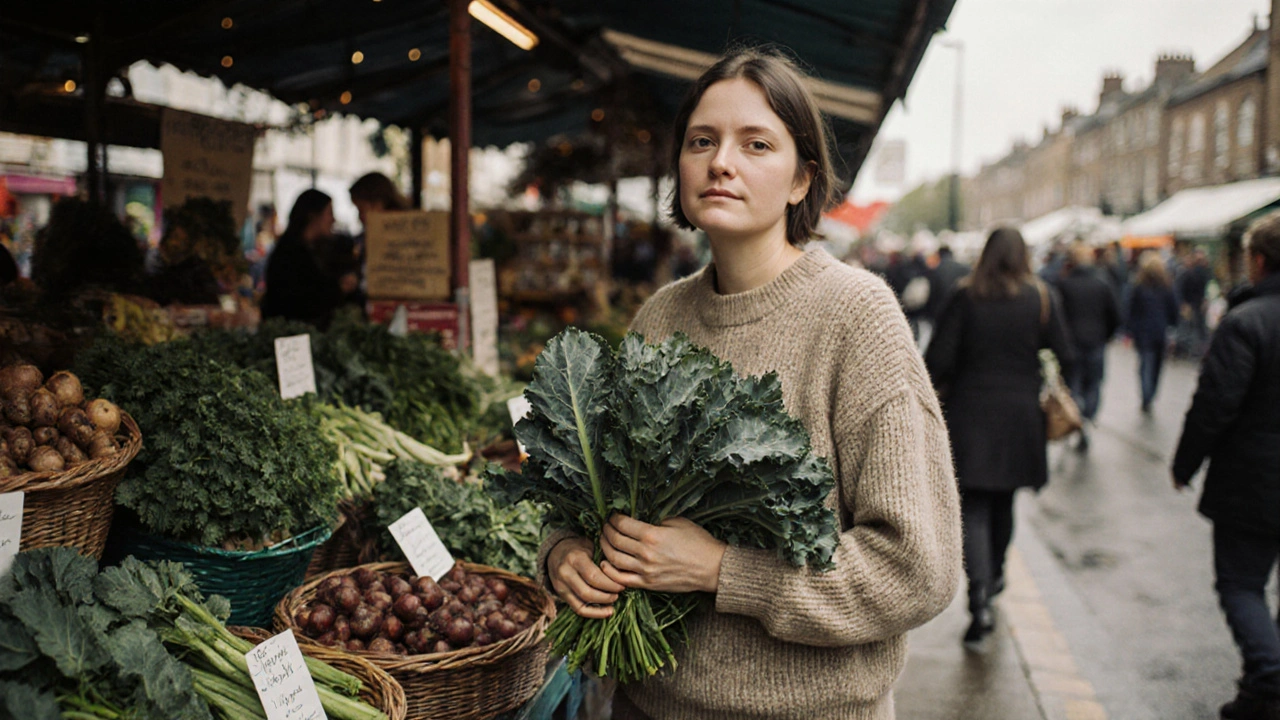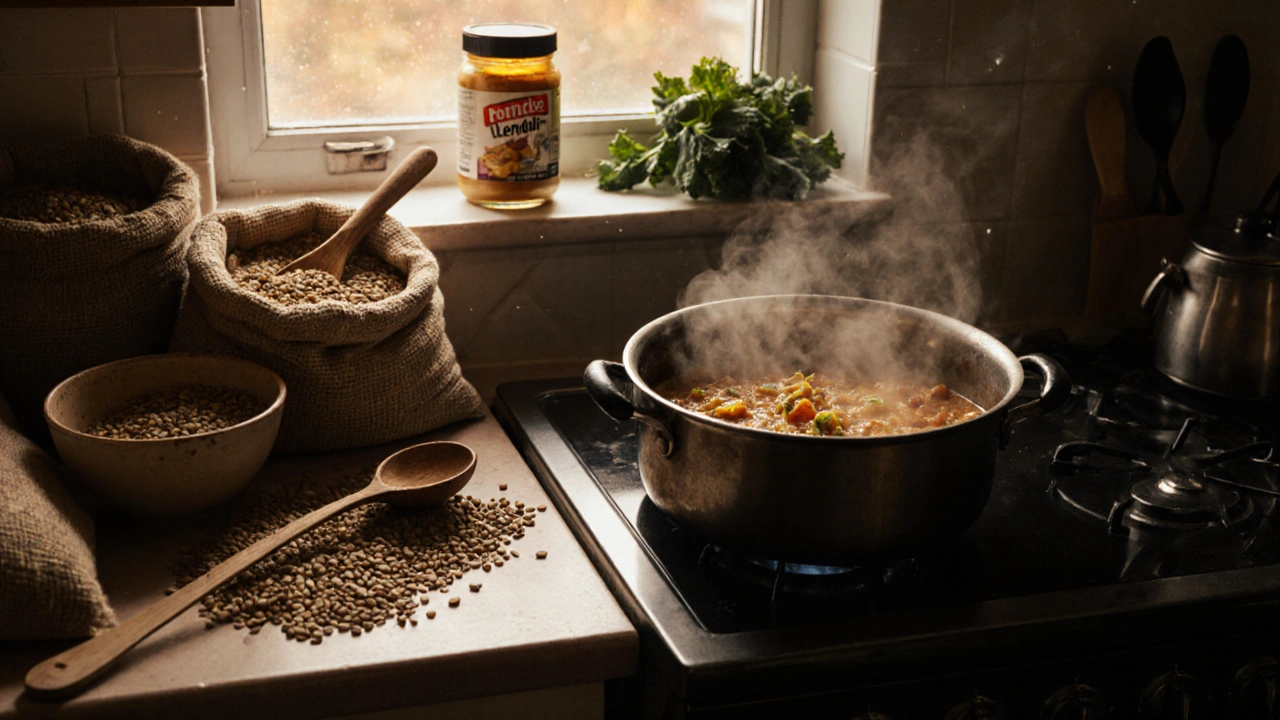When you think of London food, you might picture fish and chips, Sunday roasts, or a greasy spoon breakfast. But over the last five years, something quieter but just as powerful has taken root: a thriving plant-based scene led by everyday people who don’t just eat vegan-they live it. One of them is The Little London Vegan, a local influencer who turned her kitchen into a hub of change, one lentil curry at a time.
How It Started: From Kitchen Experiments to a Community
The Little London Vegan didn’t start with a camera or a brand. She started with a grocery list. In 2020, after a health scare and a growing discomfort with animal agriculture, she swapped out dairy for oat milk, eggs for flaxseed, and meat for jackfruit. She didn’t go all-in overnight. She tried recipes from YouTube, messed up her first tofu stir-fry, and ate a lot of plain rice. But she kept going. By 2022, she was posting weekly photos of her meals on Instagram-not staged, not filtered, just real food made in her tiny Hackney flat. Her followers grew because she didn’t preach. She showed up. A photo of her homemade cashew cheese on sourdough. A video of her buying seasonal kale at Columbia Road Market. A caption: "This costs £2.50 and feeds me for two days. No fancy supplements. Just food." People started asking: "Where do you get your protein?" "Is it expensive?" "Can I do this without spending £30 on a vegan burger?" She answered them all. Slowly, her page became a go-to guide for Londoners who wanted to eat plant-based without feeling like they had to join a cult.What She Eats (And Where)
You won’t find The Little London Vegan at the £22 avocado toast spot in Shoreditch. She’s more likely to be at The Gate in Islington, grabbing their mushroom and barley stew for £9.50. Or at Mildreds on Soho’s Lexington Street, where the jackfruit tacos come with a side of friendly service and zero guilt. Her weekly meal plan? Simple. Breakfast: oatmeal with berries and almond butter. Lunch: big grain bowls from Farm Girl in Camden, loaded with quinoa, roasted veggies, and tahini dressing. Dinner: lentil dahl made from dried lentils (£1.20 a bag) with brown rice and a side of sautéed spinach. Snacks? Roasted chickpeas, apple slices with peanut butter, or a banana. She buys most of her groceries at London Food Co-op in Brixton, where bulk bins cut costs and plastic waste. She shops at Wahaca’s lunchtime specials, where the black bean tacos are vegan by default. She knows the staff at Whole Foods on Tottenham Court Road by name-and they know she never takes a plastic bag.Living Vegan in London: Cost, Convenience, and Community
One myth she busts constantly: "Veganism is expensive." She keeps a running spreadsheet. In 2024, her monthly food bill was £112. That’s less than half of what her meat-eating flatmate spent. Her trick? Dried beans, frozen veggies, seasonal fruit, and cooking in batches. A pot of lentil stew lasts three meals. A bag of rice lasts a week. A jar of peanut butter? Two weeks. She doesn’t buy vegan cheese unless it’s on sale. She doesn’t buy plant-based burgers unless they’re on promotion. She eats what’s cheap, what’s local, and what’s tasty-not what’s marketed as "premium vegan." And she’s not alone. London now has over 1,200 fully vegan or vegan-friendly eateries, according to the Vegan Society’s 2025 report. That’s up from 400 in 2019. The city’s farmers markets-like Peckham Levels and Spitalfields-now have dedicated vegan stalls selling everything from fermented kimchi to handmade nut milks. The real win? Community. She runs a monthly potluck in a community center in Southwark. Ten people bring one dish. Everyone eats. No one pays. No one leaves hungry. Last month, they made a 12-layer lasagna with cashew ricotta and beetroot sauce. It was delicious. And it cost £3.50 per person to make.
What’s Different About Her Approach
Most vegan influencers sell transformation: "I lost 30 pounds! I’m glowing!" The Little London Vegan doesn’t. She talks about digestion. About how her bloating vanished after ditching dairy. About how she stopped craving sugar after switching to whole foods. About how she learned to cook because she was tired of eating sad salads. She doesn’t use the word "ethical" unless someone asks. She doesn’t post pictures of cows in fields. She posts pictures of her hands peeling garlic. Her captions are short: "Garlic takes 7 minutes to roast. Worth it." Her content is anti-perfection. One post showed her burnt chickpeas. The caption: "Tried a new spice blend. Burned them. Ate them anyway. Still tasted good." That’s why people trust her. She’s not selling a lifestyle. She’s sharing a habit.How to Start Like Her (Without the Instagram Account)
You don’t need to go vegan overnight. You don’t need to buy a new blender. You don’t need to follow her on Instagram. Start here:- Swap one meal a week. Try a bean chili instead of beef stew.
- Buy one new ingredient you’ve never tried-like nutritional yeast, tempeh, or seitan.
- Visit one vegan-friendly café you’ve never tried. Order the simplest thing on the menu.
- Keep a note on your phone: "What did I eat today? Was it tasty? Was it cheap?"
- Don’t delete your favorite non-vegan food. Just add a vegan version beside it.
Where London’s Vegan Scene Is Headed
The city’s vegan wave isn’t fading. It’s deepening. Supermarkets now have entire plant-based aisles. Schools serve vegan lunches. Even the NHS has started recommending plant-based diets for heart health. The next big shift? Accessibility. Vegan food is no longer a niche for hipsters in Camden. It’s becoming a normal part of working-class life. In places like Barking and Newham, community kitchens are serving vegan meals to families on food vouchers. Local councils are funding cooking classes in public libraries. The Little London Vegan doesn’t call herself an activist. She calls herself a cook. But her impact? Real. She’s changed how dozens of people eat. She’s shown that you don’t need to be rich, radical, or perfect to live plant-based in London. She’s proof that the future of food isn’t in fancy labs or billionaire-backed startups. It’s in a small kitchen in East London, with a pot of simmering lentils, a worn-out wooden spoon, and someone who just keeps showing up.Why This Matters Beyond the Plate
Eating plant-based isn’t just about health or animals. It’s about how we live in a city that’s expensive, crowded, and often disconnected. When you cook at home with dried beans and seasonal veggies, you’re not just feeding yourself. You’re reducing waste. You’re supporting local farmers. You’re cutting your carbon footprint by up to 50% compared to a meat-heavy diet, according to the University of Oxford’s 2024 food impact study. And in a city where rent is high and time is low, cooking simple, cheap, plant-based meals is a quiet act of resistance. It says: I don’t need to buy my way to wellness. I can make it myself. The Little London Vegan didn’t set out to change the world. She just wanted to feel better. But in doing that, she helped others do the same. And that’s how real change starts.Is vegan food expensive in London?
Not if you cook at home. The average monthly food bill for a vegan in London is around £110-£130, which is often cheaper than a meat-and-dairy diet. Buying in bulk, using dried beans, frozen veggies, and seasonal produce keeps costs low. Vegan burgers and cheeses can be pricey, but they’re optional. Most of The Little London Vegan’s meals cost under £3 per serving.
Can you get enough protein on a vegan diet in London?
Absolutely. Lentils, chickpeas, tofu, tempeh, seitan, edamame, quinoa, nuts, and seeds are all high in protein and widely available in London. A single cup of cooked lentils has 18g of protein-more than an egg. Most Londoners who eat plant-based get more than enough protein without supplements. The NHS confirms that a well-planned vegan diet meets all protein needs.
Where are the best vegan restaurants in London?
Top picks include The Gate (Islington) for hearty, seasonal dishes; Mildreds (Soho) for comfort food; Farm Girl (Camden) for grain bowls; Wahaca for affordable tacos; and Unity Diner (Hackney) for vegan burgers and milkshakes. Many cafés now have vegan options, so you don’t need to go to a "vegan-only" spot to eat well.
Do you need to buy special vegan products to be vegan in London?
No. Many people start by simply eating more whole plant foods-beans, rice, potatoes, vegetables, fruits, nuts, and seeds. These are the foundation of most vegan diets. Vegan cheeses, meats, and milks are convenient but not required. The Little London Vegan eats mostly whole foods and avoids processed vegan products unless they’re on sale.
Is London a good city for vegans?
Yes. London has over 1,200 vegan-friendly eateries and is ranked among the top 5 vegan cities in the world by HappyCow. Supermarkets stock plant-based alternatives, and public transport hubs now have vegan snack options. The city also hosts regular vegan markets, pop-ups, and cooking workshops. It’s easier than ever to eat plant-based here.
Next Steps: What to Try This Week
If you’re curious but unsure where to start:- Make a batch of lentil soup on Sunday. Freeze half. Eat it all week.
- Try a vegan curry from a local takeaway. Ask if they can skip the butter.
- Visit a farmers market. Talk to a vendor selling fresh kale or mushrooms.
- Replace your morning yogurt with oatmeal and berries.
- Watch a 10-minute video of The Little London Vegan making her £2.50 lunch. Then try it yourself.
